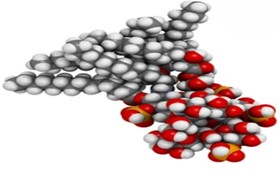Fixation Protocol
GUIDELINE
- Freshly harvested tissue of interest should be immediately fixed to avoid degradation.
- 10% Neutral Buffered Formalin (NBF) or 4% Paraformaldehyde solution (PFA) are commonly used for histology. These are effective fixatives for H&E, and the majority of immunohistochemistry (IHC) markers and special stains.
- Optimal fixation is key to best research results.
METHODS
Tissue Fixation
- Reagent preparation. Neutral buffered formalin (NBF) is consisting of 10% formaldehyde buffer solution, and pH 7.0-7.4 is commonly used in most laboratories. Paraformaldehyde (PFA) solution needs to be freshly prepared.
- Fix tissue in 10% neutral buffer formaldehyde (NBF) solution or freshly prepared 4% paraformaldehyde solution. Formaldehyde-based fixatives are preferred for long term tissue preservation and are known to produce best results for sectioning, morphology (H&E), special stains and immunohistochemistry.

- Cut tissue into smaller pieces (max 4-5 mm), and use ample amount of fixative, making sure tissue is completely immersed in the fixative.
- Fixation must be performed for no more than 24-36 hours depending on the size of tissue. Timing of the exposure of a sample to the fixative is important and must be calibrated.
- Fixed tissue should be transferred to PBS or 70% ethanol and sent for processing to prepare tissue blocks.
Embryo Fixation
- Fixative preparation. Freshly made RNase-free 4% paraformaldehyde (4% PF) used specifically for in situ hybridization. 4% paraformaldehyde or 10% buffered formalin used for routine histology (i.e., H&E staining). 2% paraformaldehyde (βgal, GFP, RFP), 4% paraformaldehyde or 10% buffered formalin used for immunocytochemistry.
- Collect embryos and wash briefly with cold PBS.
- Place embryos in fixative. Fix embryos at 4°C. Fix < E11.5 embryos without shaking. Fix E11.5 or later embryos with gentle shaking.
- The duration of the fixation is different depending on the age of the embryos and method of the staining.
| IHC | In Situ | HE | |
| E6.5-E8.5 (In uterus) | Overnight | 2 days | Overnight to several days |
| E9.5-12.5 | Overnight | Overnight or 2 days | Overnight to several days |
| E14.5-New born | Overnight | 2 days | Overnight to several days |
| Adult tissue | Overnight | 2 days | Overnight to several days |
- For embryos E15.5-E16.5 the skin should be removed if the skin is developed.
NOTES
- Modes of fixation. There are two ways of fixing tissue, immersion and transcranial perfusion. Immersion fixation involves placing freshly harvested tissue in an adequate amount of fixative. Transcranial perfusion uses the circulatory system to spread the fixative, which when performed skillfully results in rapid and effective fixation.
- Length of Fixation. A fixative should be exposed to the tissue sample for as long as is needed for the solution to completely penetrate the sample. For immersion fixation, certain factors such as density of the tissue sample, rate of penetration, and temperature must be taken into consideration.
- Size of tissue and volume of fixative. Fixatives are poor buffers; therefore, the pH of solution tends to change during the process of fixation. A large volume of fixative will assure an optimal fixation. The volume of fixative used should be approximately 15-20x the volume of the tissue.
RELATED PRODUCTS & SERVICES
Reference
- Vaught JB and Henderson MK. (2011). "Biological sample collection, processing, storage and information management." IARC Sci Publ. (163), 23-42.





